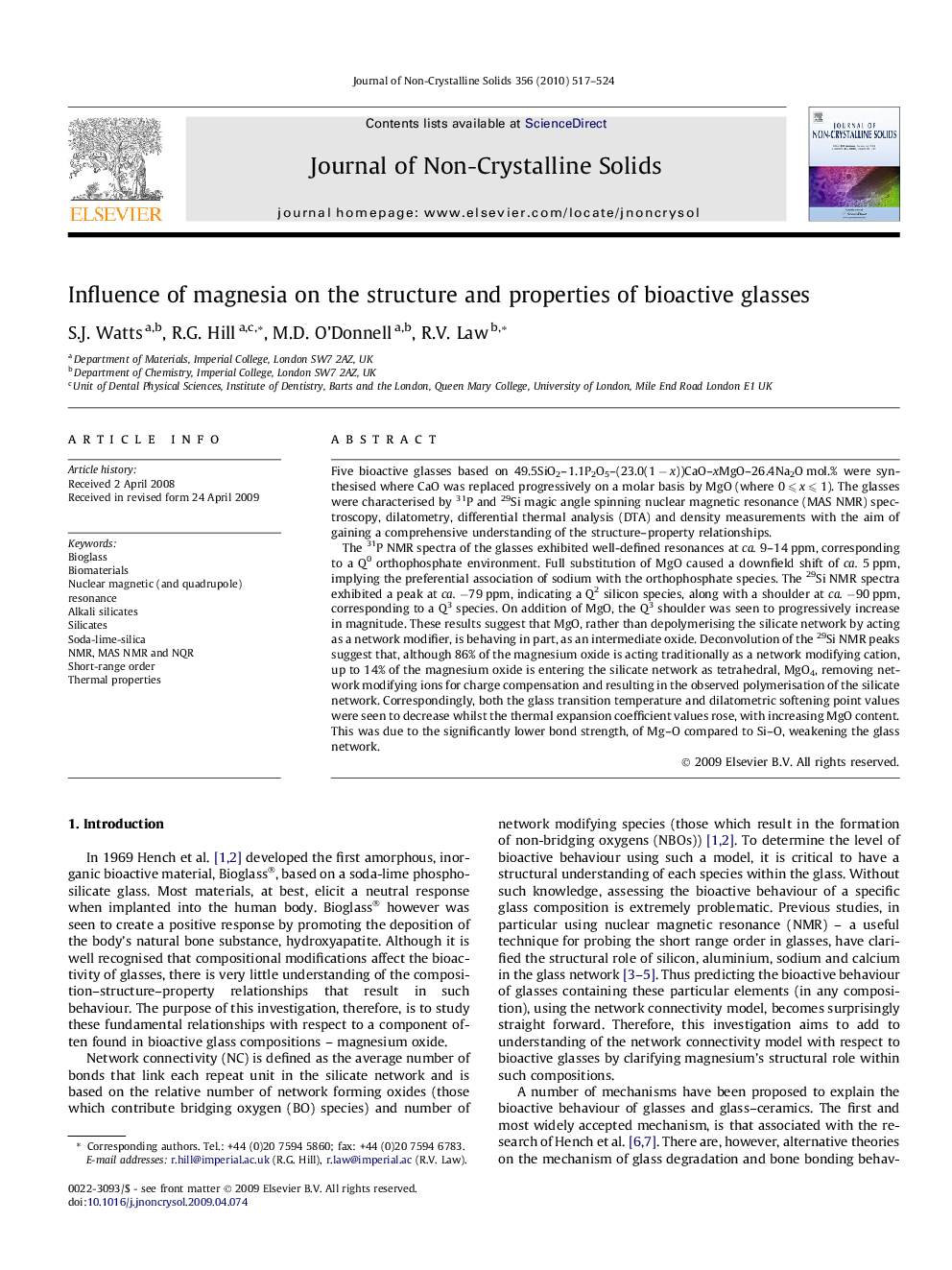| کد مقاله | کد نشریه | سال انتشار | مقاله انگلیسی | نسخه تمام متن |
|---|---|---|---|---|
| 1482831 | 1510500 | 2010 | 8 صفحه PDF | دانلود رایگان |

Five bioactive glasses based on 49.5SiO2–1.1P2O5–(23.0(1 − x))CaO–xMgO–26.4Na2O mol.% were synthesised where CaO was replaced progressively on a molar basis by MgO (where 0 ⩽ x ⩽ 1). The glasses were characterised by 31P and 29Si magic angle spinning nuclear magnetic resonance (MAS NMR) spectroscopy, dilatometry, differential thermal analysis (DTA) and density measurements with the aim of gaining a comprehensive understanding of the structure–property relationships.The 31P NMR spectra of the glasses exhibited well-defined resonances at ca. 9–14 ppm, corresponding to a Q0 orthophosphate environment. Full substitution of MgO caused a downfield shift of ca. 5 ppm, implying the preferential association of sodium with the orthophosphate species. The 29Si NMR spectra exhibited a peak at ca. −79 ppm, indicating a Q2 silicon species, along with a shoulder at ca. −90 ppm, corresponding to a Q3 species. On addition of MgO, the Q3 shoulder was seen to progressively increase in magnitude. These results suggest that MgO, rather than depolymerising the silicate network by acting as a network modifier, is behaving in part, as an intermediate oxide. Deconvolution of the 29Si NMR peaks suggest that, although 86% of the magnesium oxide is acting traditionally as a network modifying cation, up to 14% of the magnesium oxide is entering the silicate network as tetrahedral, MgO4, removing network modifying ions for charge compensation and resulting in the observed polymerisation of the silicate network. Correspondingly, both the glass transition temperature and dilatometric softening point values were seen to decrease whilst the thermal expansion coefficient values rose, with increasing MgO content. This was due to the significantly lower bond strength, of Mg–O compared to Si–O, weakening the glass network.
Journal: Journal of Non-Crystalline Solids - Volume 356, Issues 9–10, 15 March 2010, Pages 517–524